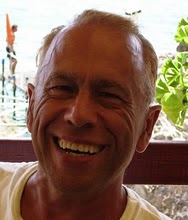When giving my lectures I am often surprised by the fact that many practitioners do not use the Back-Shu points very much. In this short article I would like to explain how I use the Back-Shu points in practice.
The Back-Shu points are mentioned in various chapters of the Nei Jing. Chapter 51 of the "Ling Shu" lists the Back-Shu points of the five Zang.1
Chapter 59 of the "Su Wen" discusses the Back-Shu points of the Fu; in all, the Nei Jing lists 10 Back-Shu points, leaving out BL-22 Sanjiaoshu, first mentioned in the "ABC of Acupuncture" (Jia Yi Jing, AD 282), and BL-14 Jueyinshu, first mentioned in the "1000 Golden Ducats Prescriptions" (Qian Jin Yao Fang, AD 652).2
The Chinese character (Shu 俞) denoting these points means “to transport” indicating that they transport Qi to the inner organs. Each point takes its name from the corresponding organ, e.g. BL-15 Xinshu is “Heart-Shu”.
The importance of the Back-Shu points in treatment cannot be over-emphasized. They are particularly important for the treatment of chronic diseases and, indeed, one may go so far as saying that a chronic disease cannot be treated without using these points at some time during the course of treatment. This is essentially how I use them, i.e. to tonify the organs (Yin or Yang) in chronic conditions.
The Back-Shu points affect the organs directly and are therefore used in Interior diseases of the Yin or Yang organs. This is a very important aspect of the clinical effect of these points. The way in which they act is quite a different from that of other points.
When treating the Internal Organs, other points work by stimulating the Qi of the channel which then flows along the channel like a wave, eventually reaching the Internal Organs. For example, if we needle LIV-3 Taichong we initiate a small wave around the point that flows along the channel, eventually reaching the Liver. If we needle BL-18 Ganshu (Back-Shu point of the Liver) we reach the organ directly without having to go through the channel.
In my experience, when we needle the Back-Shu points, Qi goes directly to the relevant organ, not through the intermediary of its channel. For this reason, I usually retain the needle in these points a shorter time than for other body points (usually no longer than 10 minutes when used to tonify). That is because we do not have to wait for the “wave” in the channel to reach the organ.
Chapter 67 of the “Nan Jing” says: “Yin diseases move to the Yang [area]; Yang diseases move to the Yin [area]. The Front-Mu points are situated on the Yin surface [and therefore treat Yang diseases]; the Back-Shu points are situated on the Yang surface [and therefore treat Yin diseases].”3 According to this statement, the Back-Shu points would be used to treat “Yin diseases” and the Front-Mu points “Yang diseases”. “Yin diseases” and “Yang diseases” can be interpreted in different ways.
One interpretation of “Yin” or “Yang diseases” is that of chronic and acute diseases respectively: in this interpretation, the Back-Shu points would be used for “Yin diseases”, i.e. chronic diseases, and the Front-Mu points for “Yang diseases”, i.e. acute diseases.
Although this rule should not be interpreted rigidly, it is certainly valid and finds a widespread clinical application, i.e. using the Back-Shu points for chronic and the Front-Mu points for acute diseases. This is how I use them.
Another characteristic of the Back-Shu points is that they are used to affect the sense organ of the corresponding organ. For example, BL-18 Ganshu is the Back-Shu point of the Liver and can be used for eye diseases.
Although the Back-Shu points are mostly used to tonify the organs, they can also be used in Full patterns. In particular, they can be used to subdue rebellious Qi and clear Heat. For example, the point BL-21 Weishu can be used to subdue rebellious Stomach-Qi in case of belching, nausea or vomiting. The point BL-18 Ganshu can be used to move stagnant Liver-Qi. BL-15 Xinshu can be used to clear Heart-Fire and BL-13 Feishu to stimulate the diffusing and descending of Lung-Qi and release the Exterior.
I personally use the Back-Shu points after needling points on the front of the body. I would usually retain the body points approximately 20 minutes (in an adult), withdraw them, ask the patient to turn over, and then use the Back-Shu points. I generally leave the Back-Shu points in a shorter time, i.e. no longer than 10 minutes (in an adult). I needle the Back-Shu points obliquely towards the midline.
If I use the Back-Shu points to tonify Qi, Yang or Blood, I often use direct moxa cones (7 moxa cones).
In conclusion, I personally think that using the Back-Shu points is essential to treat chronic diseases.
END NOTES
1. 1981 Spiritual Axis (Ling Shu Jing). People’s Health Publishing House, Beijing, first published c. 100 BC. p. 100.
2. 1979 The Yellow Emperor’s Classic of Internal Medicine-Simple Questions (Huang Di Nei Jing Su Wen). People’s Health Publishing House, Beijing, first published c. 100 BC, pp. 303-312.
3. Nanjing College of Traditional Chinese Medicine 1979 A Revised Explanation of the Classic of Difficulties (Nan Jing Jiao Shi). People’s Health Publishing House, Beijing, first published c. AD 100, p. 146.






